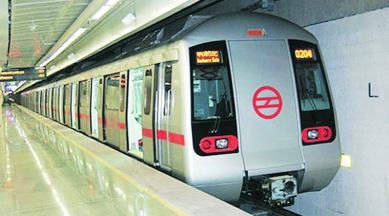What is the new Metro Policy?
The Union Cabinet approved the new Metro Rail Policy on Wednesday that focused on giving clarity on development of projects, collaborations, participation, standardising norms, financing and creating a procurement mechanism so that the projects can be implemented effectively.

The Union Cabinet approved the new Metro Rail Policy on Wednesday that focused on giving clarity on development of projects, collaborations, participation, standardising norms, financing and creating a procurement mechanism so that the projects can be implemented effectively.
According to the new policy, the Metro rail projects will be approved and aided by the Central government only if their is private participation and the projects ensures last-mile connectivity for commuters. The policy allows respective states to formulate rules and regulations and it empowers them to establish permanent fare fixation authorities.
Further, the projects will now be cleared on the basis on economic internal rate of return of 14%. This is considered one of the widely followed best practices. It will alter the system that runs on the current financial internal rate of return of 8%.
The policy was proposed by the Union Ministry of Urban Development and provides models for states seeking to develop Metro projects with help by the Centre.
The three models are outlined in the policy:
–Public-Private Partnership with Central assistance. This will be part of the Union Finance Ministry’s viability gap funding scheme.
— Grant by Centre whereby 10% of Metro project cost will be provided by the Central government as lump sum amount.
— 50-50% Equity sharing model taken between the Centre and state.
All three models have a mandatory requirement of private participation.
Since Metro projects require huge capital, they were usually financed by the Centre and states with equity and grants. Some amount is usually raised by investment bodies like in the case of Delhi Metro, Japan International Cooperation Agency pooled in massive investment.
However, the new policy says that the states will now have to come up with innovative ways to raise funds through means like value capture finance tools. They will also have to issue corporate bonds for metro projects for enabling low-cost debt capital.
One of the key aspects of the policy is the last mile connectivity that lays down a catchment area of 5km. The feeder services will require a commitment from the government to be provided via feeders, walkways, pathways and para transport means.
In the last four years, the Centre has sanctioned at least Rs 30,653 crore to Metro projects across the country. A large portion of it, Rs 12,345 crore, was sanctioned to overseeing companies. The current fiscal allotment for Metro rail projects till the end of quarter ended June stands at Rs 17,960. However, in the same period, the expenditure has only been Rs 4,650 crore. The figures given out by the Union Ministry for Urban Development were of Delhi NCR, Uttar Pradesh, Rajasthan, Maharashtra, Gujarat, Karnataka, Tamil Nadu and Kerala.